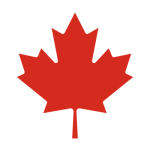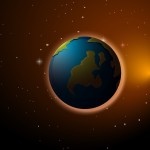"Our Planet: Secrets of Nature" documentary episode, the focus shifts to Bolivia, showcasing its diverse landscapes and natural wonders. The episode begins at Salar de Uyuni, the world's largest salt lake in Bolivia, where locals build homes using salt blocks. Further northwest lies Potosi, an ancient city rich in silver sources and a challenging mining site. The episode then explores traditional silver mining techniques and superstitions. The landscape transitions to the tropical rainforest of Los Yungas, where unique crops like coca leaves are grown. Bolivia is one of the few countries where coca cultivation is legal, but the production of cocaine in secret laboratories is a source of controversy. Gold mining emerges as another livelihood for locals in the region, known as the local Golden Triangle. The episode concludes with a visit to Lake Titica, the highest navigable lake in the world, and the birthplace of the first Incas. The communities on the island of the Sun are situated on an island named the Island of the Sun, with historical monuments like the Escalera Del Inca and the Pilco Kena Temple. The lake is a significant source of sustenance for the locals, with trout farming and agriculture being the primary industries. The making of traditional reed boats is now being replaced by modern methods, and only one last workshop remains on the island that specializes in building these classical reed boats. The episode also touches upon the use of traditional reed boats in Norway and the discovery of ancient observatories in Bolivia, including the mysterious akapana pyramid and the Gate of the Sun. The natural world and human culture come together to create a breathtaking vision at Lake Tiaka, marking the end of this episode's exploration of the planet's miraculous nooks. The next episode takes viewers to Africa for a Zambian Safari and then to Kuram in Lvivia to admire Europe's natural wonders.
"Our Planet," The focus shifts to Bolivia, a country known for its numerous natural wonders. The episode begins at the high plateau of Alapo, home to the world's largest Salt Lake, Salar de Uyuni. This salt lake, which covers an area of 10,500 square km, is a bottomless source of salt for Bolivia, with an output of 25,000 tons per year. Despite the harsh conditions, locals have managed to build homes using salt blocks. The landscape is disrupted only by a small island, Isla Incahuasi, where ancient cacti grow. Further northwest lies Potosi, a beautiful city established by the Spaniards in 1545 after the discovery of a silver source. Potosi, located at an incredible height of over 4,000 m above sea level, was once one of South America's largest and most prosperous cities. The episode concludes with a visit to the foothills of the pink mountain, Cerro Rico, where the ancient Incas believed vast amounts of silver were hidden, and the Spaniards began its extraction.
"Our Planet Secrets of Nature," The focus shifts to the traditional silver mining techniques in the 16th century and the superstitious practices involved. Miners in the shafts offer sacrifices to Eltio, an embodiment of evil, as a scarecrow placed by the Spaniards to intimidate the indigenous workers. The mountain, rich in silver sources, is a challenging and dangerous task, with about 20 miners losing their lives annually. The episode then moves on to the Ala Plano Plateau, where families breed llamas and guanacos, and the water is so soft that it washes better than machines. The descent to Bolivia's Los Yungas region involves traveling through the infamous "Camino De La Muerte," a dangerous highway with a high fatality rate. The government has made improvements to the road to reduce accidents.
The camera explores the diverse landscapes of Bolivia, transitioning from the majestic mountains to the tropical rainforest of Los Yungas. The climate becomes increasingly humid and rainy, signaling the approach to the Amazonian jungle. The fauna and flora indicate the region's tropical location, and unique crops like koca (coca leaves) are grown for various uses. Coca leaves are used for headaches, stomach issues, and altitude adjustment. Bolivia is one of the few countries where growing coca is legal, and the leaves are picked and dried manually. However, the cultivation of coca has been a source of controversy due to the production of cocaine in secret laboratories. As the altitude decreases, the rainforest becomes denser, and gold mining emerges as another livelihood for locals. The region is known as the local Golden Triangle, with three beautiful wild rivers and ideal habitats for mosquitoes. Gold mining is a primitive and labor-intensive process, and the acquired gold sells for low prices in nearby towns. The documentary concludes by showcasing the natural wonders of Bolivia, including the renowned Lake Tiaka on the Alapo plateau.
The focus shifts to Lake Titica in Bolivia, the highest navigable lake in the world, located at an altitude of nearly 4,000 meters above sea level. The lake's narrowest part, the Teina Straight, is less than a kilometer wide, making access to the Bolivian villages of San Pedro and San Pablo challenging without water transportation. The communities are situated on an island named the Island of the Sun, believed to be the birthplace of the first Incas. The island is home to several historical monuments, including the never-ending 300-step stairway, Escalera Del Inca, and the ruins of the Pilco Kena Temple. The lake is also a significant source of sustenance for the locals, with trout farming and agriculture being the primary industries. The area is believed to be the cradle of maize and potatoes. Another island on the lake, Suasi, is known for its traditional reed boats, which may have been a tradition inherited from the Incas or even older. However, the making of these boats is now being replaced by modern methods using planks and nails. Despite the low costs involved, only one last workshop remains on the island that specializes in building these classical reed boats.
The focus shifts from Norway to Bolivia. In Norway, the use of traditional reed boats, known as balas de Tora, is discussed. These boats, which are only used by the poorest fishermen, have a short lifespan and are not profitable due to the damage caused by the reads. The boats are propelled using poles and are only suitable for relatively shallow waters. In Bolivia, archaeologists are uncovering the foundations of an ancient observatory, including a mysterious akapana pyramid and a huge Gate of the Sun. The town of Copa Cabana, named after a lake, is home to a cathedral dedicated to the Virgin of Copacabana, with a black 16th-century statue that has never left the shrine. The natural world and human culture come together to create a breathtaking vision at Lake Tiaka, marking the end of this episode's exploration of the planet's miraculous nooks. The next episode takes viewers to Africa for a Zambian Safari and then to Kuram in Lvivia to admire Europe's natural wonders.
"Our Planet: Secrets of Nature," The focus shifts to the country of Georgia, known for its ancient wine traditions and natural wonders. The episode highlights the beauty of Georgia's Ktis and Svaneti regions, showcasing the rugged mountains and the promise of ancient vineyards. The region is also home to some nearly extinct animals, adding to its natural allure. The documentary invites viewers to join in admiring these miracles of nature.







